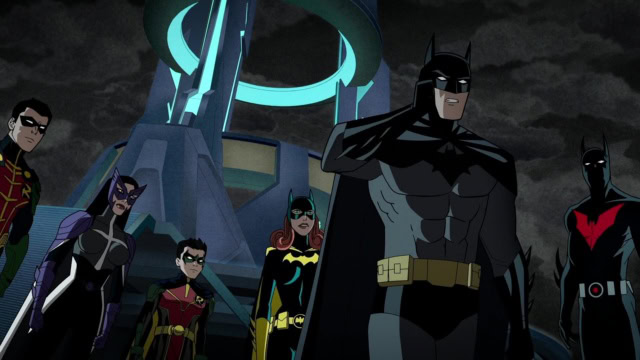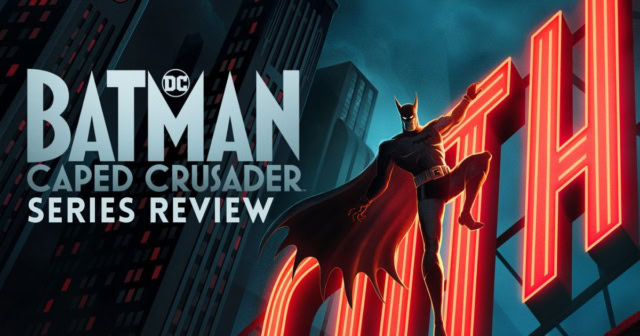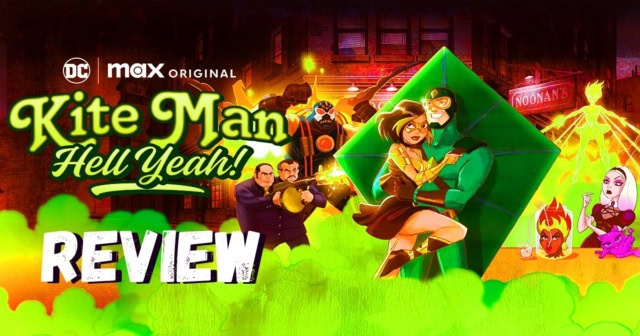A Visual and Emotional Journey: DC’s ‘Justice League: Crisis on Infinite Earths’ Trilogy

The Justice League: Crisis on Infinite Earths DC animated film trilogy has come to a conclusion this month with the release of Part Three on digital and Blu-ray/4K. Directed by Jeff Wamester and written by Jim Krieg, is an adaptation of the iconic DC Comics storyline, created by Marv Wolfman and illustrated by George Pérez. A culmination of every project from Tomorrowverse (and beyond), Crisis on Infinite Earths has a multi-layered narrative that honors its source material while making it its own thing and delivers a visually stunning and emotionally resonant experience.
[Warning: Spoilers from this trilogy of animated DC films are below!]
Justice League: Crisis on Infinite Earths provides a unique perspective on the death of the Multiverse
The beginning of Crisis on Infinite Earths is about an elderly man who keeps sending Barry Allen on a series of “time trips” to pivotal moments in his life. They are moments from Barry’s life that serve a higher purpose through the whole trilogy. These sequences are not only a nostalgic reflection on this Barry’s journey as The Flash but also set the stage for the massive scale of the conflict ahead.
Barry’s travels show us different moments from his life, like meeting Batman, forming the Justice League, or living his last days on Earth. A significant part of Part One is dedicated to establishing the Justice League’s dynamics and assembling a team of characters from the multiverse who will try to save it.
We see Barry’s journey to an alternate Earth, where he encounters the tyrannical Crime Syndicate. The Syndicate’s boredom with ruling their Earth makes an interesting turn when they learn about the possibility of conquering the Multiverse. The destruction of their Earth by an anti-matter wave, despite the Syndicate’s efforts to stop it, shows the scale of this threat caused by an Anti-Monitor.

Part One concludes with the recruitment of various heroes by Harbinger (revealed to be Supergirl in disguise) at the bidding of the Monitor. The gathering at the space station includes heroes from infinite Earths, which helps to add more potential to the future narrative. In the end, we also learn how important Barry Allen’s time travels were.
We learn that heroes built towers on many Earths that were meant to stop the anti-matter wave. Barry and Iris were slowed in time, to figure out, how to make the one on Earth-1 to work. It makes it even more emotional with Barry’s attempts to slow time and live out a full life with Iris, only to see her die of old age.
The final moments of his life are with Spectre, who lets Barry say goodbye to his friends, in a form of a vision of the past, which we were able to see in Justice League: Warworld.
The final confrontation in the Crisis on Infinite Earths trilogy
Part Two of Crisis on Infinite Earths escalates the multiverse conflict as the Anti-Monitor’s forces, consisting of an endless army of shadow demons, launch an all-out assault on the multiverse. Despite the heroes’ efforts, they are heavily overwhelmed by the invincible shadow demons, emphasizing the scale of the threat they’re facing against.
Key emotional beats include Batman’s interactions with another Earth’s Robins, Batman Beyond and Huntress, as well as Superman’s meeting with his multiverse counterpart, deepening the connections between characters across the multiverse. As our heroes fight shadows, and discover they are afraid of intense light, there’s another mystery about to reveal itself.
When John Stewart is about to fight the shadows, he meets the same elderly man who sent Barry through time. And it’s the one and only John Constantine. The same John Constantine who is now atoning for his sin, which is destroying the multiverse by sending Flash to create another Flashpoint at the end of Justice League Dark: Apokolips War. He was sent by Spectre into the unknown part of existence, and now we know where and why. He is more than a hundred million years old, and is regaining his memories.
In the end, John Stewart decides to overload his ring and destroy it, to blow up the huge army of shadows. Only to reveal that all shadows are merged into one being, Anti-Monitor, who is now merely undefeatable. It’s one of the greatest battles our multiverse heroes fought in so far.
As the Anti-Monitor decides to use his powers to destroy the Earth-1, a magical wave emerges that sends the remaining Earths, into a pocket universe. This also allows for other introductions of heroes from different timelines and worlds, including notable figures from the past. It creates a time barrier that can’t find the difference between the present, past or future, as it mixes different eras together.

As momentum builds towards the ultimate showdown with the Anti-Monitor, Lex Luthor starts his manipulations and betrayals. Luthor decides to betray others in order to not only save his Earth, but to gain enough information on how to defeat Anti-Monitor. The villain hopes to defeat him by himself and rule what’s left of the multiverse.
Justice League: Crisis on Infinite Earths trilogy, overall thoughts
One of the strengths of this trilogy is its ability to balance large-scale action with intimate character moments. The interactions between characters from different Earths and timelines provide emotional depth, highlighting the personal stakes involved in the multiversal conflict. The battle scenes are visually spectacular, with the combined forces of the Justice League, the Justice Society of another Earth, and other heroes launching a coordinated assault on the Anti-Monitor.
When our heroes don’t know what to do, and they see other Earths being destroyed, they know it’s now or never. They have to make an ultimate sacrifice. And I’m not going to spoil the part about how they do it, what made them do it, or who is responsible for that, but it’s a perfect closure for the DC animated universe. Closure for the whole animated universe from DC, and not only Tomorrowverse.
I was really happy while I was watching the first and third parts of this trilogy because they were great movies that perfectly captured the essence of the event that Crisis on Infinite Earths is. Even though Part Two was not as good, it still fits perfectly in this epilogue of the animated universe.
Another great part of this trilogy is the use of various cameos from the whole DC Multiverse. We got to see Peacemaker for a second, Batman Beyond (voiced once again by Will Friedle), we got the last appearance of Kevin Conroy as the iconic Batman from The Animated Series and his Earth’s Justice League, Teen Titans and more. It was such a cool part of this event.
The conclusion of the Tomorrowverse and DC’s animated universe
Justice League: Crisis on Infinite Earths is a great conclusion of the DC animated universe that delivers a story which is both epic and deeply personal for many fans. The trilogy recycles some parts of the essence of the original comic book storyline while making it accessible and engaging for a new audience, shaping it into its own version.
I was a huge fan of productions from the Tomorrowverse era, and I’m really going to miss it. Jensen Ackles was great as Batman in those projects, Matt Bomer gave us the deep and emotional version of Barry Allen. Darren Criss as well as Meg Donnelly captured perfectly the essence of cousins from Krypton.
Justice League: Crisis on Infinite Earths Part One and Part Two can be found on Max or to rent or purchase on many platforms. Starting this month, you can rent or buy Part Three on digital, Blu-ray or 4K most places films are sold. Have you watched the full trilogy yet? Let us know what you think abou it on social media @mycosmiccircus!
Batman: Caped Crusader is A Fresh Take on The Dark Knight
Kite-Man: Hell Yeah! A Hilarious Adventure in the Harley Quinn Universe




